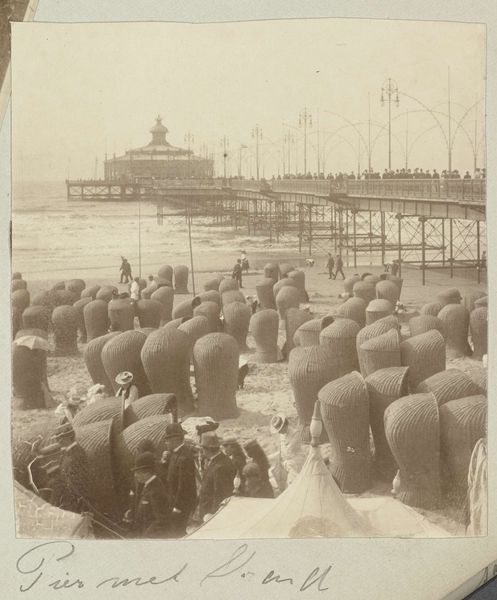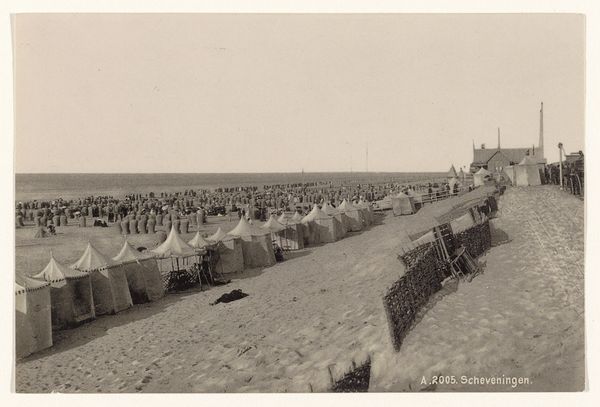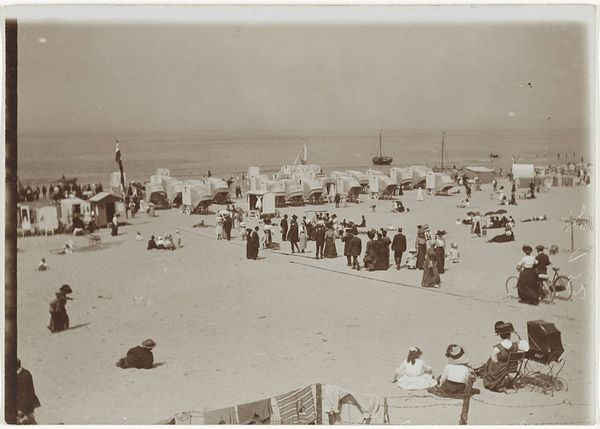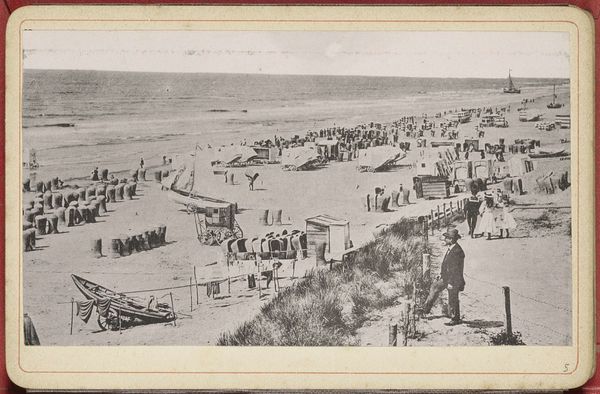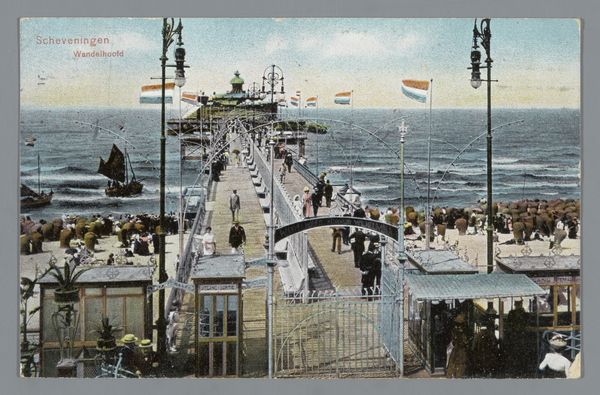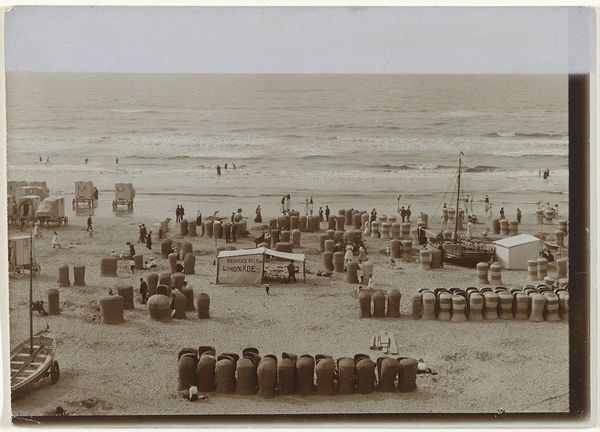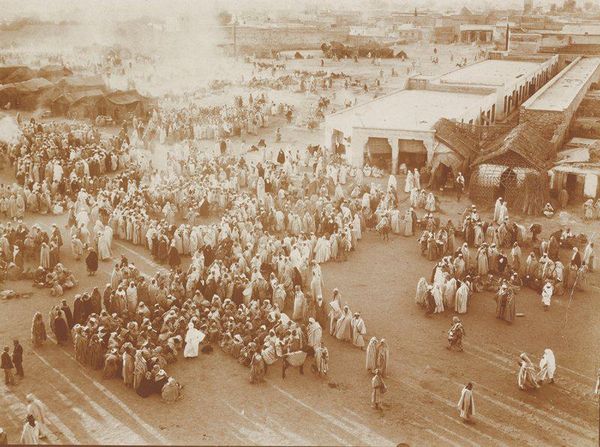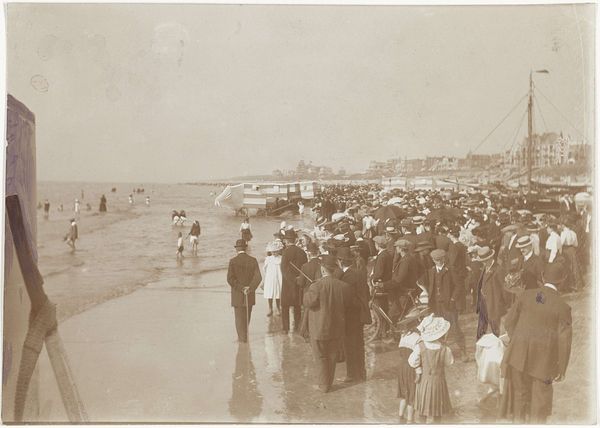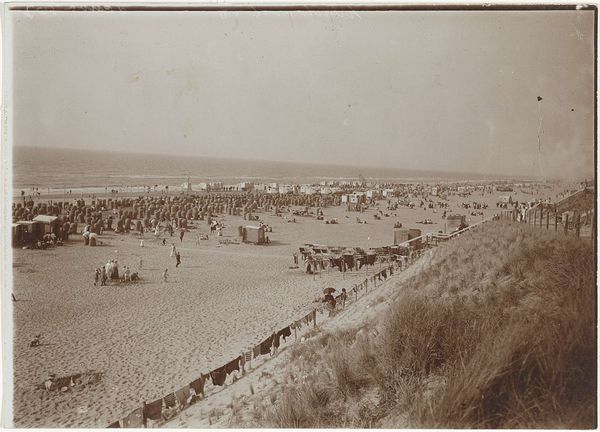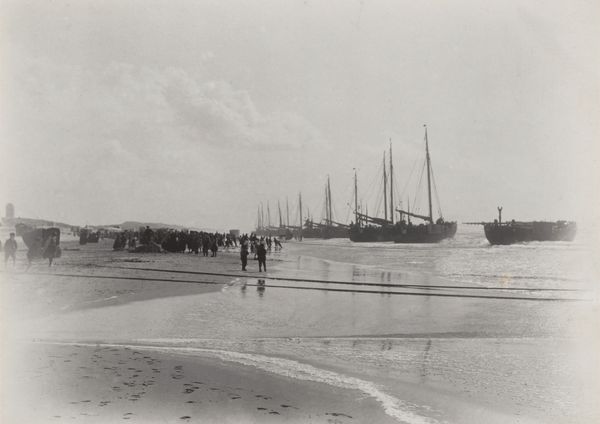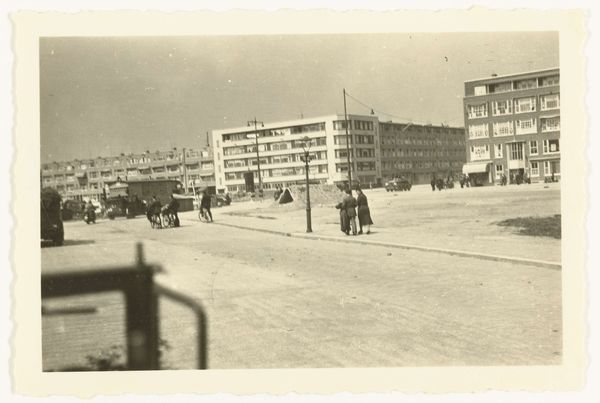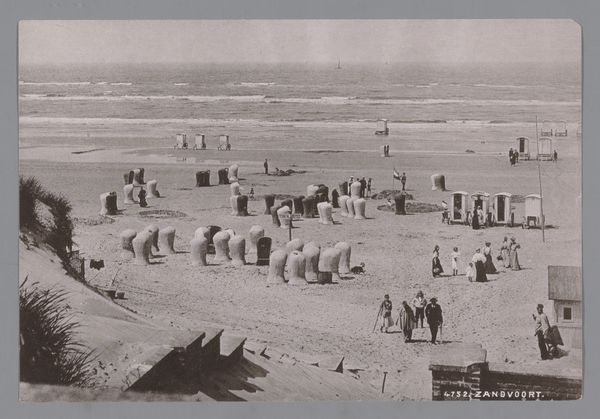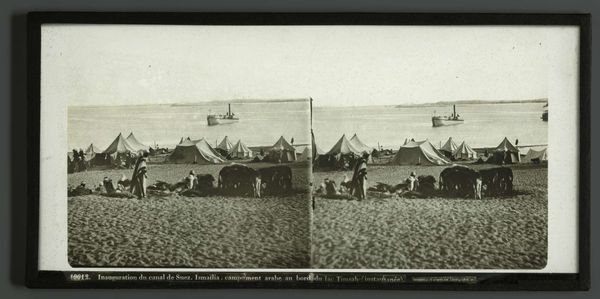
photography
#
pictorialism
#
landscape
#
street-photography
#
photography
#
cityscape
#
monochrome
Dimensions: height 89 mm, width 138 mm
Copyright: Rijks Museum: Open Domain
Editor: So, this photograph is titled "Scheveningen, Pier en Strand," possibly taken between 1912 and 1917 by Weenenk & Snel. The monochromatic scene captures a bustling beach with a pier stretching into the distance. The image feels surprisingly modern, despite its age, perhaps due to the somewhat unusual placement of the beach chairs. What catches your eye when you look at this image? Curator: Well, immediately, I'm drawn to the sheer labor involved in constructing and maintaining both the pier and these intriguing beach contraptions, wouldn't you agree? Consider the extraction and transportation of the materials, most likely iron, the physical exertion demanded by such infrastructure. Editor: You're right; I hadn't considered the construction aspect so directly. I was mainly focused on the scene itself. Curator: Think about it this way: even the beach itself is a material acted upon by forces, sculpted by the tides and wind. These hooded beach chairs, also called bathing machines, are made out of wood, wicker, fabric, or all of them. People literally carry these structures around or have their servants to carry it. These devices catered to specific needs around leisure, but also speak volumes about societal norms, modesty and the rituals of consumption prevalent during the early 20th century, isn't it interesting? Editor: It is! So, you're suggesting we view the photograph not just as a representation of a scene, but as evidence of specific manufacturing processes? Curator: Exactly. It challenges us to see the social relations embedded within the physical environment, the interplay between industrial output and leisure practices. Don't you agree? Editor: That really changes how I see the whole image. It becomes less about the people and more about how they interacted with the materials around them. Thanks! Curator: My pleasure. Focusing on the materials really exposes hidden narratives!
Comments
No comments
Be the first to comment and join the conversation on the ultimate creative platform.
